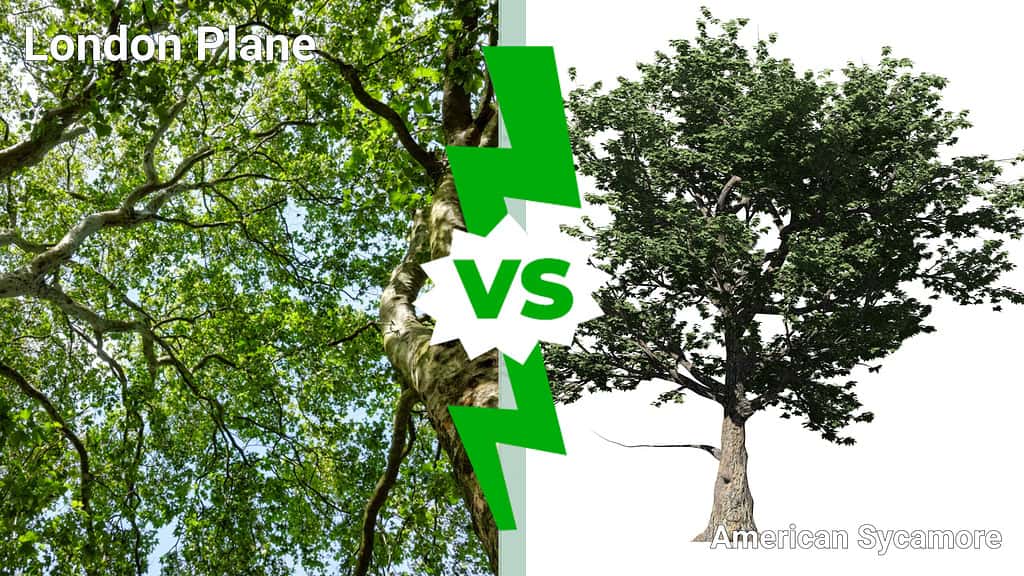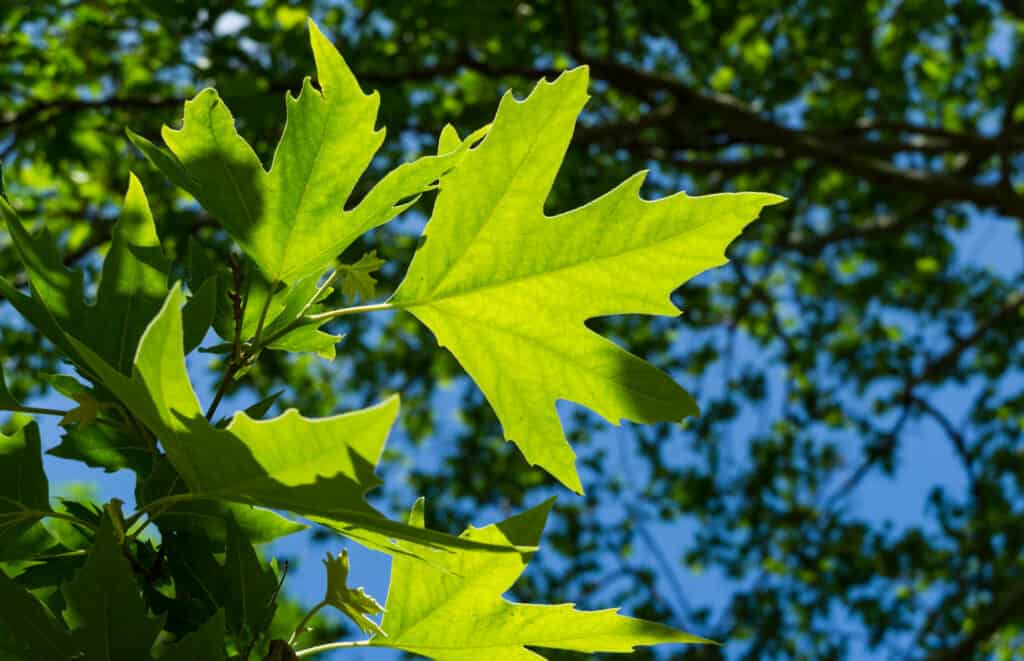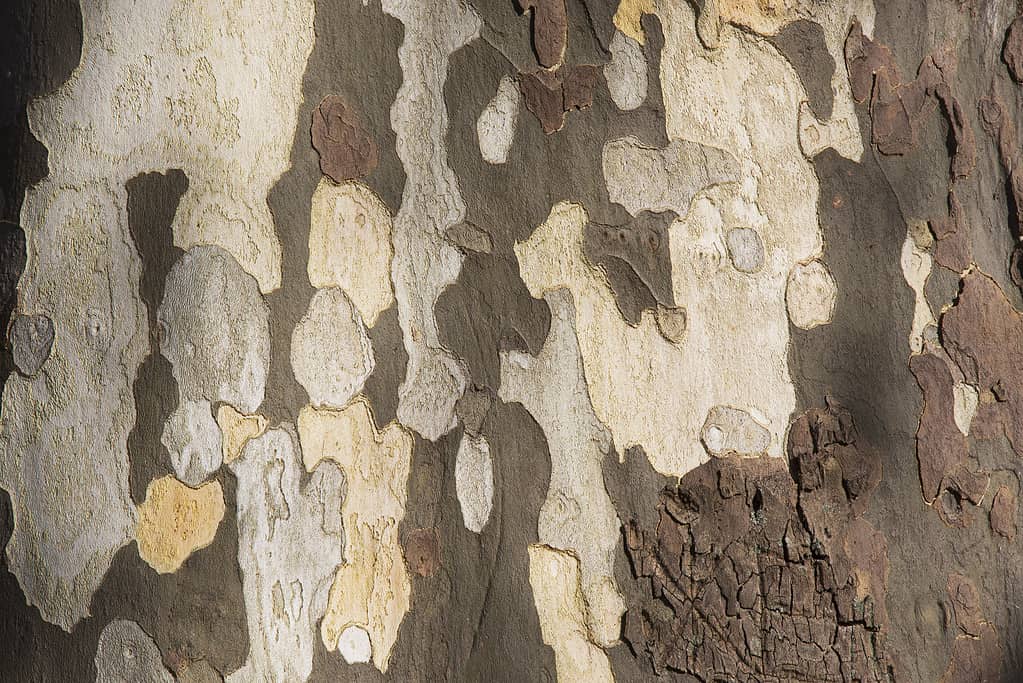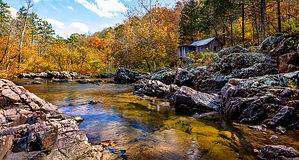
It’s true that some people don’t see much difference between the London plane tree and the American sycamore. However, if you take a closer look, there are a few differences between these towering giants. The first thing that’s different is that the London plane is actually a hybrid of the American sycamore, Platanus occidentalis, and the oriental plane, P. orientalis. Because of this, the London plane’s scientific name is either Platanus × acerifolia or Platanus × hispanica.
1. Origins
The American sycamore is native to the eastern half of North America. Its species name, occidentalis, points to its origins in the Western Hemisphere. The other parent tree’s species name, orientalis, points to its origins in the Eastern Hemisphere. This tree is native to the temperate climates of western Asia.
Though it’s a hybrid, the London plane has been around for a long time. It probably first appeared in the 17th century when an American sycamore and an oriental plane tree were planted beside each other. Some people claimed this happened in Spain, which is the reason for the Platanus × hispanica designation. Other people claim the American sycamore and oriental plane mated in London’s Vauxhall Gardens. Besides its hardiness and beauty, the London plane is fertile even though it’s a hybrid.
Here are some other differences between these towering giants.
2. Height
The London plane tree grows 65 to 100 feet tall, with a trunk that can be over 10 feet around. The American sycamore grows taller, from 98 to 131 feet, but it is usually narrower in diameter, growing from 4.9 to 6.6 feet around. However, large, old specimens have been known to grow 13 feet around. The American sycamore is considered the largest deciduous tree in the United States, and the largest tree in eastern North America.
3. Leaves

The young leaves of the American sycamore are tender green and fuzzy.
©iStock.com/Marina Denisenko
The leaves of the London plane are thick, stiff, large and remind people of maple leaves, with a toothed center lobe and two to four side lobes, also toothed. They can be 4 to 8 inches long and as much as 5 to 10 inches wide. In spring, the leaves are fuzzy, and the wind can blow this fuzz off the leaf. This can affect people with respiratory problems such as asthma.
Sycamore leaves also have three or sometimes five lobes and are fuzzy when they’re new. The central lobe is wider than it is long, and wide incisions at its base separate it from the other lobes. The leaves are often toothed, but the lobes aren’t as deeply cut as those of the London plane.
The American sycamore isn’t the most colorful tree in autumn because the leaves turn brown and dry up before they fall. The leaves of the London plane turn an uninspiring yellowish brown before they drop.
4. Flowers and Fruit

The American sycamore usually has one fruit ball on a stem. The London plane can have two.
©Nola Creative/iStock via Getty Images
The flowers of both towering giants come in clusters that resemble small pom poms, with males and females on different stems. You can tell male and female flowers apart because male flowers are yellow or green, and female flowers are red.
The fruit is a ball full of achenes that arrive in the fall. The achenes are blown away gradually to release the seeds. One of the most notable differences between the American sycamore and the London plane is that sycamore trees usually have one ball on a stem, while London plane trees have two or rarely three on a stem. These fruit balls can persist through the winter.
5. Trunk
The trunk of the London plane grows straight up, and its branches are high enough off the ground to not interfere with city traffic. The branches are irregular and give the tree an open crown.
The American sycamore tree can have more than one trunk, but they too are often free of branches until fairly high up. The branches also grow to form an attractive open crown. Sometimes the trunk of the American sycamore is hollow. These trees can be so large that people and animals, including bears, have been known to set up house within the trunk.
6. Bark

The bark of both these towering giants peel off, leaving the bark attractively mottled.
©Anna Nelidova/iStock via Getty Images
Both the London plane and American sycamore have bark that sloughs off in flakes to reveal the lighter inner bark beneath. The trees shed like this because their bark is too rigid to stretch very well as the tree grows. The good news is this shedding gives the tree trunks a beautiful, mottled look.
7. Where You’ll Find These Towering Giants
Because it is so tolerant of pollution and even removes pollutants from the air, London plane trees are often seen in cities along streets, boulevards, and parks.
The American sycamore is native to the eastern and central part of the United States, southern Ontario and Quebec, and down to northeastern Mexico. It flourishes in wetlands.
8. Lifespan
The American sycamore is quite a long-lived tree and can live as long as 600 years. London plane trees may not live as long, as they are often planted in stressful city environments. Still, they can live for 400 years.
9. Diseases
The London plane is less at risk of anthracnose disease than the American sycamore. This disease is caused by a pathogen called Apiognomonia veneta. It causes cankers of the tree’s twigs and buds and blights their leaves.
10. Hardiness Zones
London plane thrives in hardiness zones 5 to 9, while the American sycamore does best in zones 4 to 9.
11. Light
The London plane prefers full sun, though it can stand partial shade. The American sycamore does best in partial shade to full sun.
12. Soil
London plane trees are not fussy about soil, but they do best in loamy, deep, rich soil that drains well. The American sycamore is a tree of wetlands, and it prefers moist soil as long as it’s well-drained.
13. Water
The London plane needs a medium to high amount of watering. The American sycamore can tolerate some drought. If possible, make sure it does get water during dry periods.
14. Temperature
Both of these towering giants do well in a temperate climate and can stand hot summers and cold winters.
15. Fertilizer
The London plane could use some fertilizing now and then, especially since it’s often planted in the poor soils of urban areas. The American sycamore isn’t a heavy feeder, but you should give it some fertilizer in early spring.
Thank you for reading! Have some feedback for us? Contact the AZ Animals editorial team.








